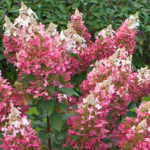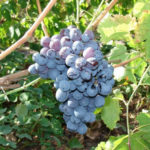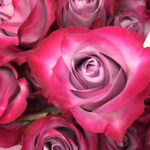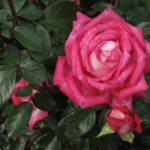Rose Ashram
The more spectacular the color of delicate rose petals, the more interest it causes. A striking example is the variety with the eastern name Ashram. Today, this type of noble plant is highly popular among Russian flower growers, which, according to forecasts, will only increase. This variety will add color to your flower garden, will become the main decoration of the garden.
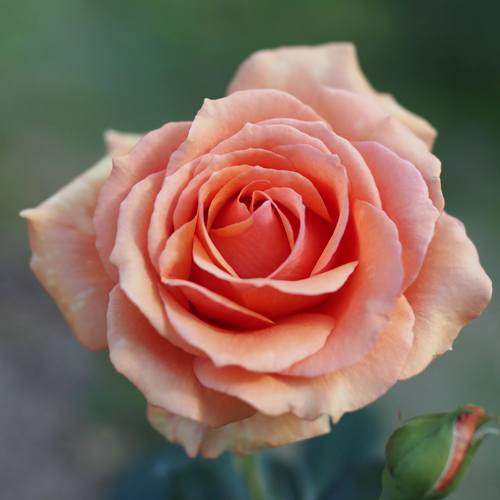
History of appearance
Ashram is another creation of breeders from the Tantau rose-growing company, located in Germany and famous throughout Europe, if not the whole world for its beautiful aristocratic decorative and flowering cultures. Our hero belongs to the group of tea hybrids and was bred in 1998. The unusual name of the variety comes from the word "ashraya", which means "protection" in Sanskrit. In addition, in ancient India, the term "Ashram" was used in relation to the abode of hermits and sages, located, as a rule, somewhere far from people: for example, in a mountainous or forest area. The registration names of the rose are TANmarsa and TAN01106. In the catalogs you can find synonymous variety names that differ little in sonority from the original name: King David, Bora-Bora.
Description of appearance and features
This variety is very memorable. Its appearance is engraved in memory thanks to its large flowers, the color of which is rather difficult to describe. The most apt definition for the shade of delicate buds: copper-brown-orange. In addition, it has creamy, peachy, sandy, mustard or light brick notes. At the moment of flowering, terry petals acquire light pink tones. The size of the flower in the phase of complete dissolution varies from 10 to 18 cm. The petals in it are bent back, which creates the effect of lace. The middle is not always visible. In the buds, the petals fit tightly to each other. Most often, flowers are formed one at a time on the erect stems of a powerful shrub. However, it happens that they are collected in inflorescences of 2-5 pieces each. In any case, the flowering of a decorative perennial is lush, abundant and long-lasting.

It is a re-flowering variety. Each flower stays on the bush for up to two weeks, exuding a pleasant, light aroma. A slight intensity of fragrance is regarded by some growers as a lack of a rose, but a luxurious appearance allows you to close your eyes to this minus.
Strong shoots of the German beauty are "dressed" with dense, large leaves of rich green color, elongated, with a pronounced glossy shine. In width, the Ashram grows no more than 0.6 meters; it reaches a maximum height of 70 cm. Due to its compact size, the shrub looks neat.
Ashram is highly resistant to disease, especially black spot and powdery mildew. Its magnificent flowers are not afraid of even heavy rain. The plant is quite winter hardy. Rose shoots are not damaged when the temperature drops to -29 ° C.
Growing and care
The ideal place for cultivation is a hill, illuminated by the sun for most of the day. Also, choose an area for your shrub that has good air circulation. This condition must be observed to prevent the appearance of diseases and insect pests on the plant.
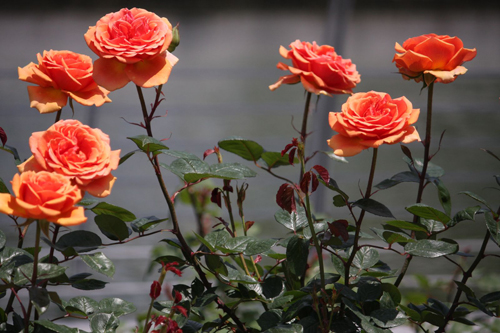
The best time for planting a decorative perennial in open ground is the second half of spring. You can start planting work in the fall, but in this case it is important to do this before the onset of frost, so that the culture has time to take root. 4-5 plants should be planted per 1 square meter. The spectacular beauty Ashram prefers loose, light, nutritious, slightly acidic soil.An excellent option is loam. There is no way to use such soil - improve the soil at hand by adding humus, vermicompost, compost, peat to it.
The rose requires the most common care: watering, feeding, loosening and mulching the soil under the bush, pruning shoots in autumn and spring, weeding, removing faded inflorescences. It is necessary to moisten the soil under the plant regularly, in a moderate mode. Perennial fertilizing is carried out with the arrival of spring (nitrogen fertilizers are used) and in summer (phosphorus-potassium concentrates are added). Spring pruning consists of removing dry, frozen shoots and shortening strong stems. In the fall, all branches of the shrub are pruned a little in order to prepare the plant for winter.
In the first year of a rose's life, it is not recommended to allow its early flowering. Until the end of summer, without exception, the buds from the plant are removed. In August, a maximum of 2 flowers are left on each shoot. This contributes to better ripening and excellent wintering of the plant, as well as its abundant flowering the next year. From autumn, it is important to cover Ashram with dry soil and cover it with spruce branches.
Use cases
Ashram is an excellent tapeworm. However, it looks gorgeous against a bright green background of a grassy lawn, not only all alone, but also in compositions with miniature conifers: dwarf pines, junipers, thujas, boxwood. Due to the unique color of the buds, it is difficult for a plant to choose a companion from the category of decorative flowering mono- and perennials. Nevertheless, the flower will be appropriate in mixborders, flower beds and round flower beds in the company of irises, phloxes, lilies, carnations, geraniums. Plants most suitable for the role of neighbors of a gorgeous beauty are the owners of snow-white, pink, light orange flowers. Also, a rose can be planted in the foreground of the site, at the front entrance to the house, garden or flower garden, near the gazebo, on the sides of the garden paths. Rose bushes will make a beautiful low hedge.

